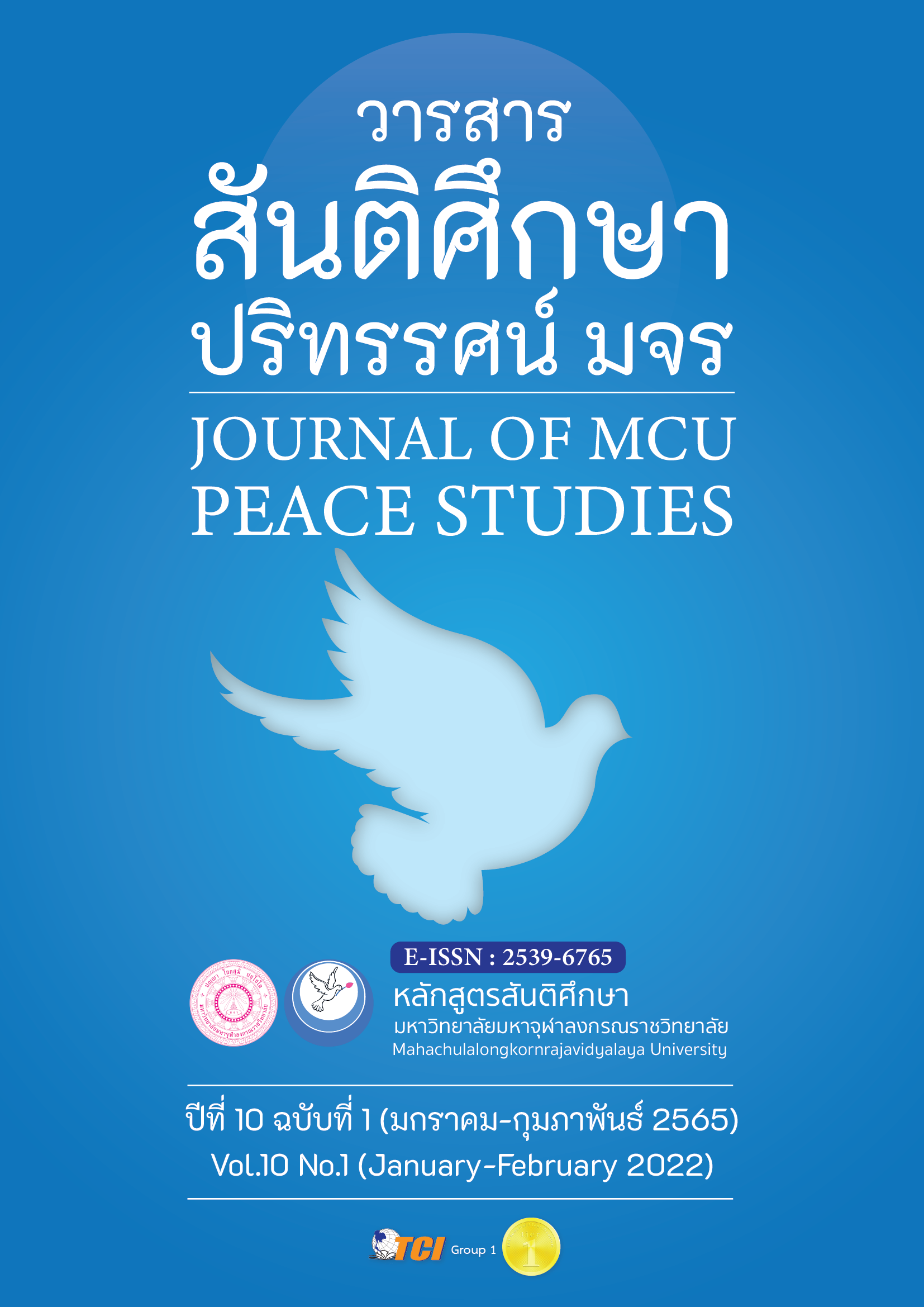Predicting in Economic Growth based on Indicator of Education Expenditure using Historical data in Thailand
Main Article Content
บทคัดย่อ
The research article aims (1) To demonstrate the relationship between educational expenditure, HDI, and GDP. (2) To examine the relationship between HDI and economic growth by GDP and the causal direction between them, measuring the Human Development Index (HDI) in terms of quantity. (3) To provide policy recommendations for government to support a more sustainable education. Use quantitative research to examine the relationship between education expenditure and economic growth, employing linear regression analysis. Data Description. The study used time series annual data that spans 2007 to 2018. A total of four variables were used for the study which presents a summary of the descriptive statistics using data averaged over 2007-2018.
The result means (1) To demonstrate the relationship between educational expenditure, HDI, and GDP. that if the educational expenditure increases by 1 unit, it will increase GDP by 0.0126 units. (2) To examine the relationship between HDI and economic growth by GDP and the causal direction between them, measuring the Human Development Index (HDI) in terms of quantity. Thus, education expenditure should be considered as a vital variable, which implies that education contributed to economic growth in Thailand during the estimation period. (3) To provide policy recommendations for government to support a more sustainable education. The results may provide some insights into how the formulation and implementation of appropriate fiscal policies relating to education could help improve the quality of education and thereby contributes to economic development of Thailand. Additionally, the study may serve as a guide in the reform of Thailand’s education policies leading to improved learning and educational outcomes.
Article Details

อนุญาตภายใต้เงื่อนไข Creative Commons Attribution-NonCommercial-NoDerivatives 4.0 International License.
ทัศนะและความคิดเห็นที่ปรากฏในบทความในวารสาร ถือเป็นความรับผิดชอบของผู้เขียนบทความนั้น และไม่ถือเป็นทัศนะและความรับผิดชอบของกองบรรณาธิการ ยินยอมว่าบทความเป็นลิขสิทธิ์ของวารสาร
เอกสารอ้างอิง
Abdellatif,T., Rodrigues, G., & Pauline, C. (2013). An empirical study of the impact of remittance educational expenditure and investment on growth in the Philippines. Appl Econom Int Dev, 13(1), 173-186.
Bank of Thailand. (2020). Thai macroeconomic indicators. Retrieved January 22, 2021, from https://www.bot.or.th/App/BTWS_STAT/statistics/ReportPage.aspx?reportID=409&language=th.
Cuesta, J. & Madrigal, L. (2014). Equity in Education Expenditure in Thailand. Development Policy Review, 32(2), 239-258.
Evensky, J. (2015). References. In Adam Smith's Wealth of Nations: A Reader's Guide (pp. 267-272). Cambridge: Cambridge University Press.
Government Fiscal Management Information System. (2020). Disbursement of Expenditure Classified by economic characteristics and ministry. Retrieved March 3, 2021, from http://dataservices.mof.go.th/Dataservices/GovernmentExpenditureEconomyMinistry.
Ifa, A., & Guetat, I. (2018). Does public expenditure on education promote Tunisian and Moroccan GDP per capita? ARDL approach. The Journal of Finance and Data Science, 4(4), 234-246.
Khan, H., & Bashar, O. (2015). Social Expenditure and Economic Growth: Evidence from Australia and New Zealand Using Cointegration and Causality Tests. The Journal of Developing Areas, 49(4), 285-300.
Islam, T. S., Wadud, A., & Qamarullah, B.T.I. (2007). Relationship between education and GDP growth: a mutivariate causality analysis for Bangladesh. Economics Bulletin, 3(35), 1-7.
Mukherjee, A. N. (2007). Public Expenditure on Education: A Review of Selected Issues And Evidence.Retrieved March 5, 2021, from https://ideas.repec.org/p/npf/wpaper/hd1.html.
Odit, M. P., Dookhan, K., & Fauzel, S. (2010). The Impact of Education on Economic Growth: The Case of Mauritius. International Business & Economics Research Journal, 9(8), 141- 152.
OECD. (2012). How does education affect the economy?, in Education at a Glance 2012: Highlights. Paris: OECD Publishing.
Pereira, J., & Aubyn, M. St. (2009). What Level of Education Matters Most For Growth? Evidence from Portugal, Economics of Education Review, 28(1), 67--73.
Phillips, D., & Ochs, K. (2003). Processes of Policy Borrowing in Education: some explanatory and analytical devices. Comparative Education, 39(4), 451-461.
Rehman, Z.U., Tariq, M., & Khan, M. A. (2018). The Role of Human Capital in Economic Development in the Selected Central Asian Countries. The Dialogue, 8(3), 235-244.
Takii, K., & Tanaka, R. (2009). Does the diversity of human capital increase GDP? A comparison of education systems. Journal of Public Economics, 93(7–8), 998-1007.
The World Bank Group. (2019) . Thailand. Retrieved January 22, 2021, from https://data.worldbank.org/country/thailand?view=chart.
The World Bank Group. (2020). Government expenditure on education, total (% of GDP). Retrieved January 22, 2021, from https://data.worldbank.org/indicator/SE.XPD.TOTL.GD.ZS?locations=TH.
United Nations Development Programme (UNDP). (2020). Human Development Data (1990-2018). Retrieved January 22, 2021, from http://hdr.undp.org/en/data#.
World Economic Forum. (2020). Human Capital Report 2015. Retrieved March 5, 2021, from https://reports.weforum.org/human-capital-report-2015/economies/#economy=THA.
Yousif, K. A. (2008). Education Expenditure and Economic Growth: Some Empirical Evidence from the GCC Countries. Journal of Developing Areas, 42(1), 69-80.


